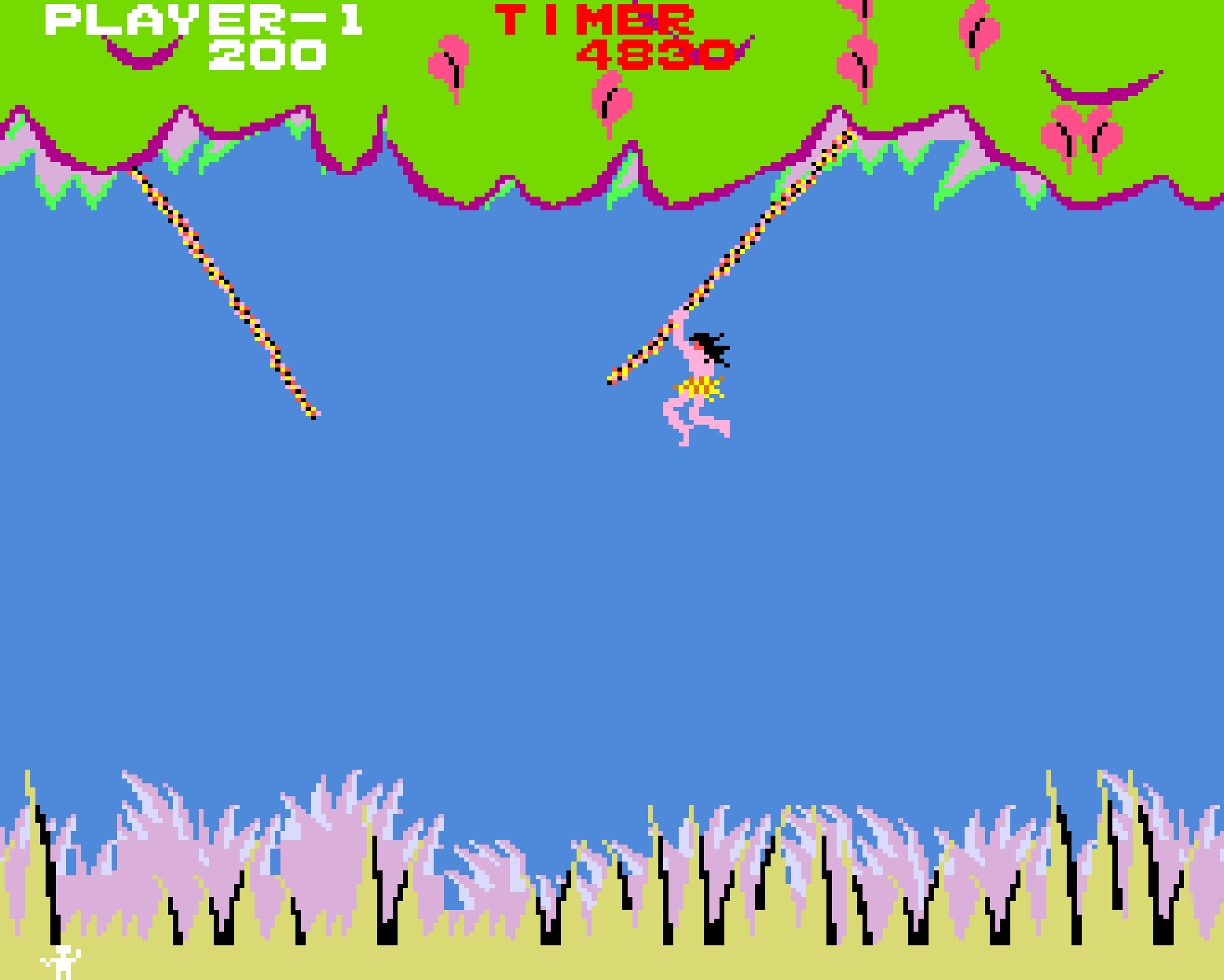Introduction
Released by Taito in 1982, Jungle King is a side-scrolling arcade game that lets players take on the role of a loincloth-clad jungle hero in a series of timed action sequences. Heavily inspired by Tarzan, the game gained early popularity for its vine-swinging intro and multi-stage structure. Though later modified due to copyright concerns, Jungle King was a notable early example of cinematic arcade platforming.

Development and History
- Developer: Taito
- Publisher: Taito
- Release Date: 1982
Jungle King was developed during a time when arcade games were beginning to experiment with variety and storytelling. The game stood out by stringing together multiple gameplay types—each level offering a different challenge—rather than repeating the same format across stages. It originally featured a Tarzan-like character with long hair, a mustache, and a signature jungle yell, which led to legal challenges and an eventual re-release as Jungle Hunt.

Gameplay Video
Gameplay and Mechanics
Core Gameplay
The game is divided into four distinct timed sequences:
- Vine Swinging: Players must time jumps between swinging vines.
- Crocodile Swim: Navigate a river while avoiding or stabbing crocodiles.
- Boulder Jumping: Climb a steep hill while leaping over or ducking under falling rocks.
- Rescue Stage: Reach the tied-up woman and defeat the native tribesman before time runs out.
Mechanics
- One-Hit Deaths: Any mistake results in a lost life.
- Precision Timing: Especially in vine and boulder stages.
- Progression Loop: The game loops with increased difficulty after the rescue.

Cultural Impact and Legacy
- Legal History: Taito was forced to alter the game after legal pressure from the estate of Edgar Rice Burroughs.
- Rebranded as Jungle Hunt: The main character became an explorer, and the jungle yell was removed.
- Innovative Structure: Helped pioneer multi-stage progression in arcade games.
- Home Ports: Released on Atari 2600, Atari 5200, Apple II, and other systems as Jungle Hunt.

Fun Facts
- Jungle Yell: The original release featured a sample of Tarzan’s yell, which triggered the legal action.
- Character Redesign: The hero’s long hair and mustache were removed in the rebrand.
- Reused Engine: Taito reused some game elements in later action titles.
- Looping Difficulty: Like many early arcade games, Jungle King has no true ending—just faster loops.

Conclusion
Jungle King stands as an important stepping stone in arcade game design. With its multi-segment gameplay, early character animation, and legal drama-turned-legacy, it holds a unique place in the history of early '80s arcades. While many remember it today under the Jungle Hunt name, the original Jungle King remains a key part of Taito’s golden age.

